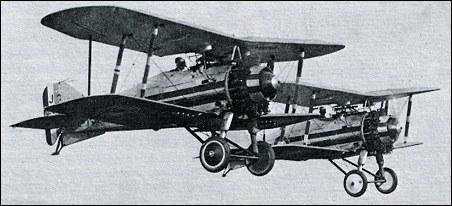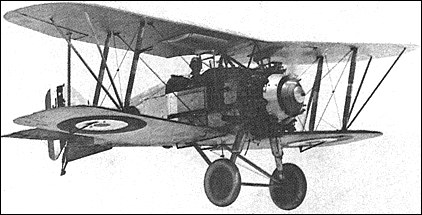In 1923 Gloster built a two-seat private-venture research aircraft which became known as the Grouse, to carry out flight evaluation of new and special biplane wings. Simultaneously a single-seat version was built. When demonstrated to Air Ministry officials, its performance was considered to be so impressive that three prototypes were ordered. The first of these became the Grebe prototype which, following evaluation, was ordered into production under the designation Grebe II. This differed from the two-seat version by having a more powerful Jaguar IV engine (instead of a Jaguar III) and several other modifications.
The Grebe entered service in October 1923 with the RAF's No 111 Squadron, and total production numbered 113 aircraft, including a small number of two-seat dual-control trainers. The Grebe was found to have wing flutter problems, resulting in the addition of outward-sloping Vee
struts to brace the overhang of the upper wing. Two Grebes were modified during 1926 with special release attachments on the top surface of the upper wing. This allowed them to be carried into the air beneath the keel of the British rigid airship R-33, and used for launching experiments.
Grebes remained in service until their replacement by Armstrong Whitworth Siskins in mid-1928.








